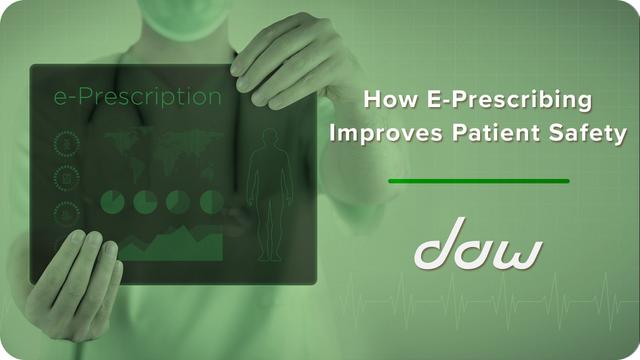How E-Prescribing Improves Patient Safety
Patient safety is at the heart of every medical decision, every clinical protocol, and every prescription. Yet traditional methods of prescribing—handwritten notes, verbal instructions, and faxes—have long been sources of preventable errors. Fortunately, the shift to electronic prescribing systems (e-prescribing) is transforming how prescriptions are managed, leading to safer and more reliable patient care.
Let’s explore the core benefits of electronic prescribing and how this digital approach is helping providers protect patients every step of the way.
The Patient Safety Challenges of Traditional Prescribing
Before the adoption of e-prescribing, healthcare providers commonly relied on paper-based methods. These workflows were prone to:
- Illegible handwriting, which could be misread by pharmacists
- Verbal miscommunications, especially over the phone or via fax
- Missing safety checks, such as drug interactions or allergy alerts
- Delayed medication delivery, when prescriptions were lost, incomplete, or sent to the wrong pharmacy
These vulnerabilities introduced real risks—from dispensing the wrong medication to delayed treatment in critical situations.
The Key Safety Benefits of E-Prescribing
E-prescribing addresses these gaps by digitizing the entire prescription process. Here’s how it enhances safety:
1. Enhanced Accuracy
When prescriptions are typed and digitally structured, the risk of misinterpretation is virtually eliminated. E-prescribing software auto-populates dosage, frequency, and route, helping reduce manual input errors.
2. Clinical Decision Support
Modern e-prescribing platforms include real-time alerts that notify providers of:
- Drug-to-drug and drug-to-allergy interactions
- Duplicate therapies
- Dosing issues based on patient age or weight
These built-in tools serve as a safety net, reducing preventable adverse drug events (ADEs).
3. Faster, More Secure Transmission
E-prescriptions are instantly sent to the patient’s chosen pharmacy—no delays, no fax errors, no misplaced forms. Encrypted transmission protects sensitive data and keeps the prescription trail secure and auditable.
4. Safer Management of Controlled Substances
Through Electronic Prescriptions for Controlled Substances (EPCS), prescribers can meet DEA and state-level requirements with:
- Two-factor authentication
- Secure identity validation
- Logs for every transmission
This reduces the risk of diversion, fraud, and abuse—especially for opioids and other high-risk medications.
5. Refill Management and Monitoring
E-prescribing systems also simplify the refill process, minimizing the risk of unintentional overprescribing or patient confusion. Pharmacies can electronically request refills, and providers can approve or modify the
m with a few clicks.
E-Prescribing vs. Traditional Prescribing: A Side-by-Side Look
| Feature | Traditional Prescribing | E-Prescribing |
|---|---|---|
| Legibility | Prone to handwriting errors | Clear and structured input |
| Safety Checks | Manual and inconsistent | Real-time alerts and guidance |
| Refill & History Tracking | Paper-based, error-prone | Automated and logged |
| Data Security | Risk of loss or tampering | Encrypted, traceable records |
| Prescription Fulfillment Time | Often delayed | Near-instant delivery to pharmacy |
It’s clear that when comparing eprescribing vs traditional prescribing, digital wins decisively in accuracy, safety, and speed.
Real-World Impact on Patient Outcomes
According to the Office of the National Coordinator for Health IT (ONC), e-prescribing has a significant impact on patient safety:
“E-prescribing helps prevent data entry errors, reduces pharmacy calls to prescribers to clarify written instructions, and eliminates the need to coordinate and manage paper prescriptions … Most importantly, e-prescribing promotes patient safety by enabling health care providers to take advantage of safety features built into health IT products that can alert prescribers of potential drug interactions, inappropriate doses, allergies, and underlying patient conditions.”
These safety features are exactly what systems like ScriptSure are built to provide—helping prescribers avoid costly mistakes and improve patient outcomes every day.ScriptSure further enhances these safety gains with features tailored to real clinical needs, including allergy alerts, real-time benefit information, and seamless EPCS compliance.
Looking to improve safety and simplify prescribing?
Discover how ScriptSure helps practices protect their patients


